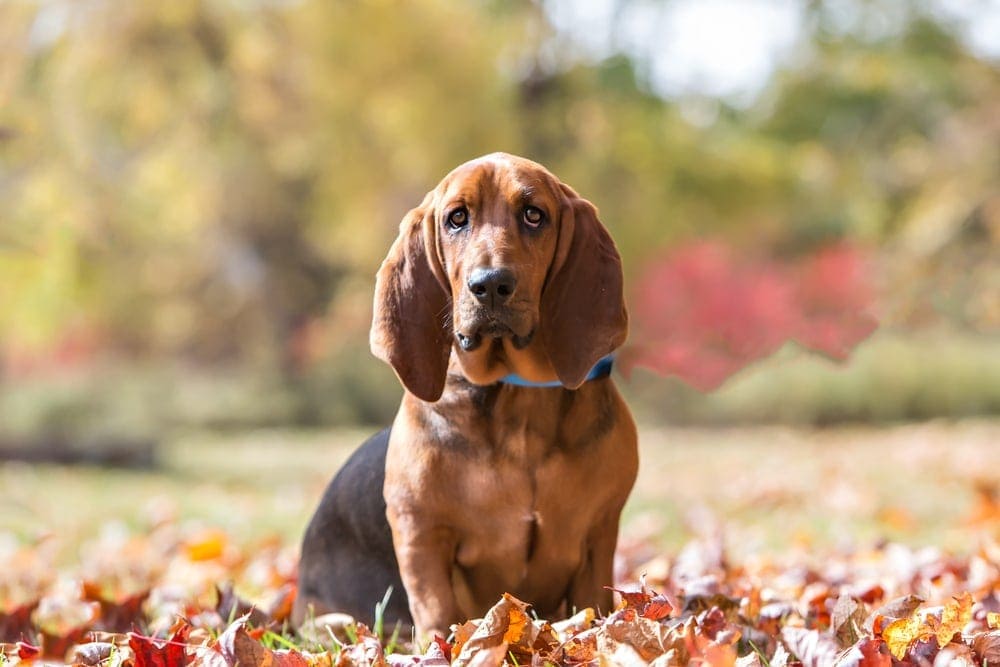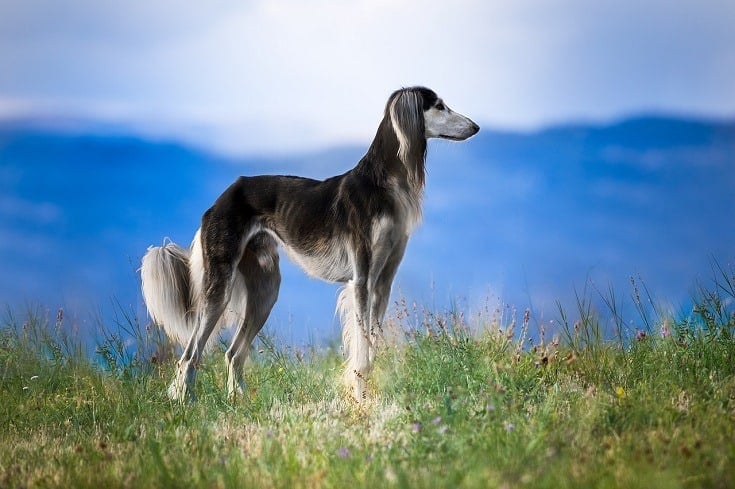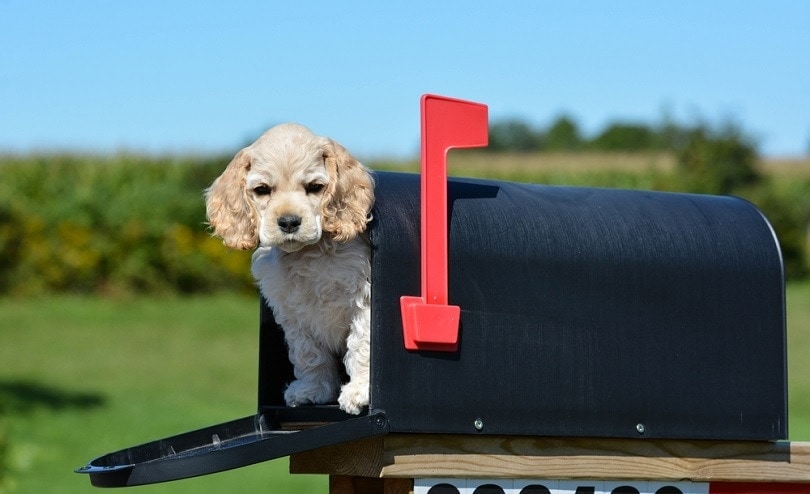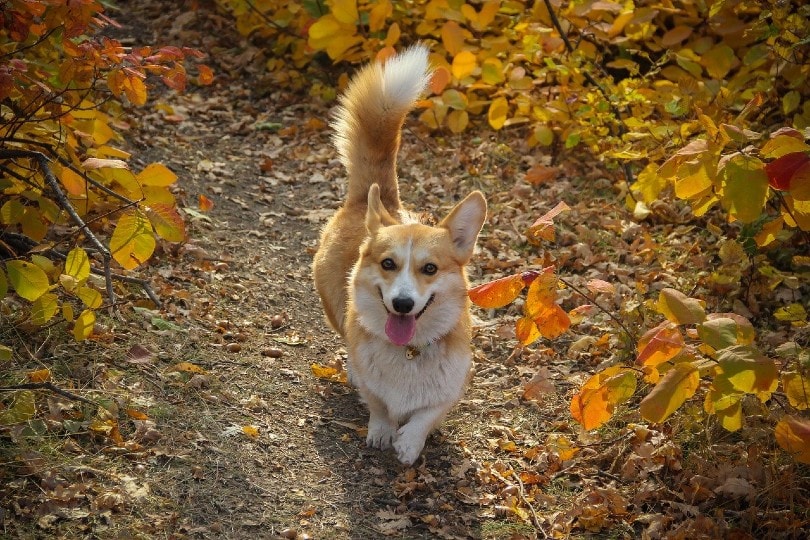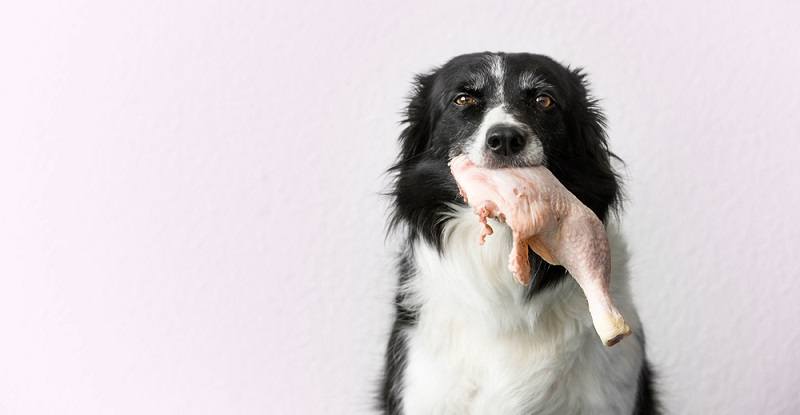Tri-color means that the coat of a certain dog has three distinct colors — usually black, brown, and white. Sometimes, you will see variations of blue or grey. Not only is each breed unique but also each dog within the breed because you won’t see any two patterns that are alike. But don’t confuse tri-colors with merles or brindles, since those offer different colors and patterns.
The 15 Top Tricolored Dog Breeds:
1. Australian Shepherd
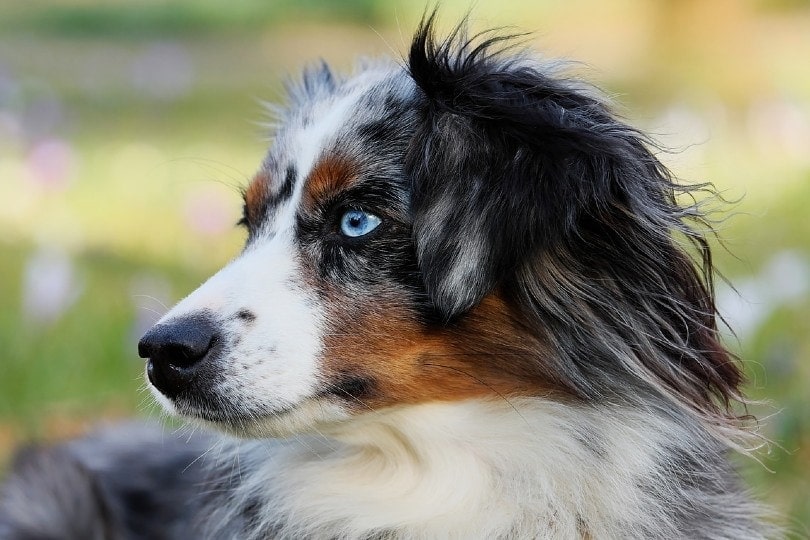
Their coat is moderate in length and can be straight or wavy. You will see some with the merle coloring, but many can be a tri-colored red or black. Aussies have a coat that consists of two layers: The inner layer is insulation, while the outer layer is waterproof and offers protection.
What’s interesting is that the amount of undercoat will vary with the geographical location. For example, a dog who lives in a colder climate will have a thicker undercoat than one who lives in a warmer climate.
- Related Read: Best Foods for Australian Shepherd Puppies
2. Pembroke Welsh Corgi
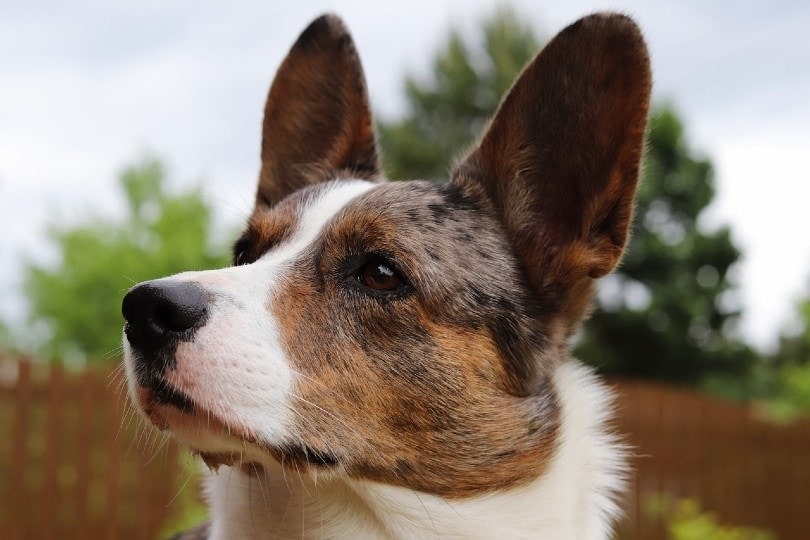
These short-legged dogs come in a variety of colors, except merle. If you see a merle Corgi, it is most likely not a purebred. You typically will see them with a red tri-color or a black tri-color. These multicolored dogs have a thick, double coat, with the outer being waterproof and the undercoat being light and soft. Corgis are constant shedders, especially in the late spring/early summer.
3. Cocker Spaniel

You will see many different colors of Cocker Spaniels, and tri-coloreds will be black or red with brown and white markings. The Cocker Spaniel coat is high maintenance and requires frequent grooming to maintain, since their hair grows at a fast rate. Daily brushing is ideal, with frequent visits to a professional groomer.
4. Basset Hound
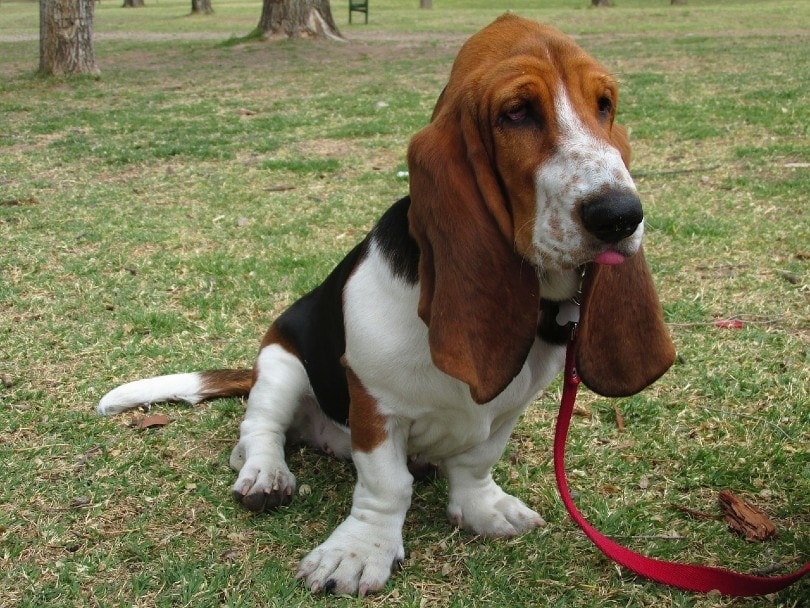
Not many can resist the doleful eyes of the Basset Hound. The tri-colored coat will be a combination of black and white with either tan, brown, or red. Even though their coat is short and smooth, they still shed fairly frequently and benefit from regular brushing and grooming to keep their coat healthy.
- You may also like: Best Dog Food for Medium Dogs – Our Top Picks!
5. Drever
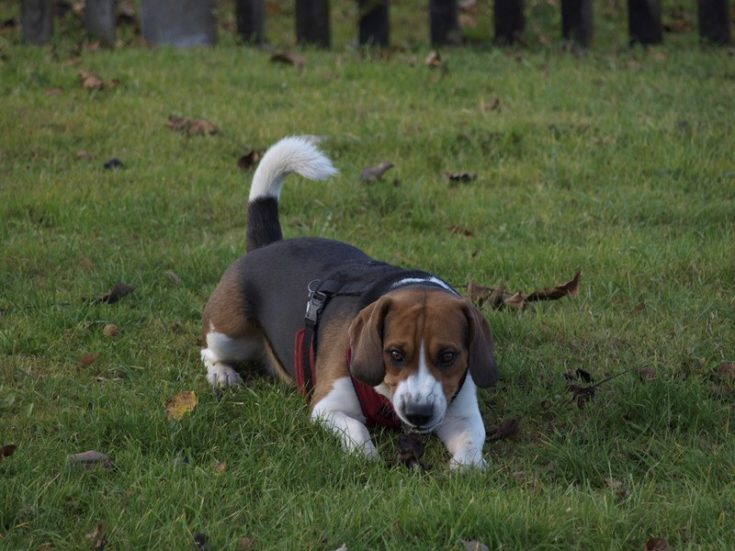
Of Swedish origin, the Drever is a short-legged hound bred for hunting deer and fox. They can be tri-colored with either red, black, and tan. You will also see brindles within this breed. The Drever’s hair is short and coarse, with occasional shedding, which makes it easy to maintain. Regular brushing and bathing will keep their coat shiny.
6. Pomeranian
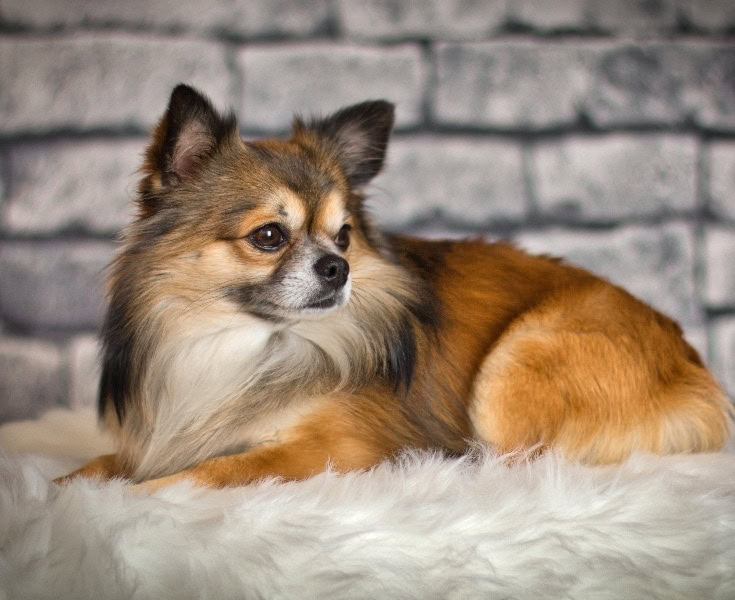
The Pomeranian has many color variations, and when seen in a tri-color, they will usually be black, chocolate, tan, and/or cream. Most of the time, the three colors will appear above the eyes, giving the illusion of eyebrows. They are known for their profuse amount of fur and sport a double-coat. Frequent brushing is ideal to maintain this multicolored dog coat, prevent tangles, and keep it neat.
7. Australian Cattle Dog

This breed is born with a white coat that turns either gray or red as they mature. Tri-colors will be gray, brown, and black in various patterns on their bodies and faces. Their coat is short and smooth but is double layered to offer greater protection from the elements. Weekly brushing with an occasional bath will keep shedding at bay.
8. English Bulldog
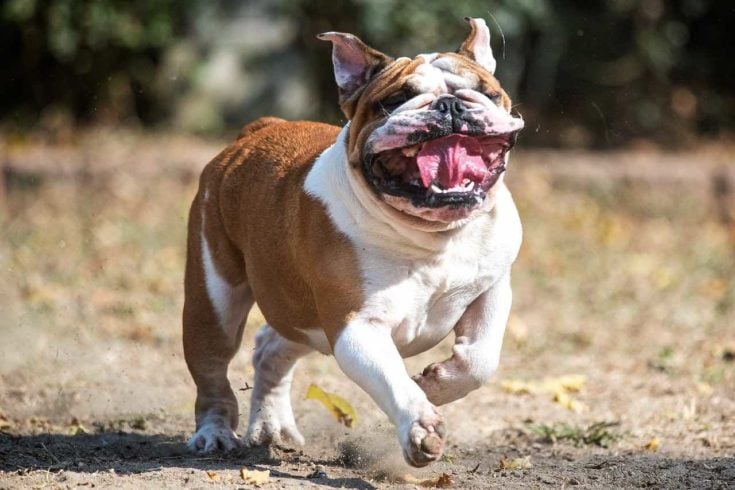
The tri-color Bulldog is not seen as often as the other shades. It is a distinct pattern of light fawn, dark brown, and white. You will also find Blue-Tri and Lilac-Tri Bulldogs. Even though this breed has short hair, they are heavy shedders, and it’s best to brush them at least three times per week. Special attention needs to be given to the wrinkles on the body and face to prevent irritation or infection.
9. Chihuahua
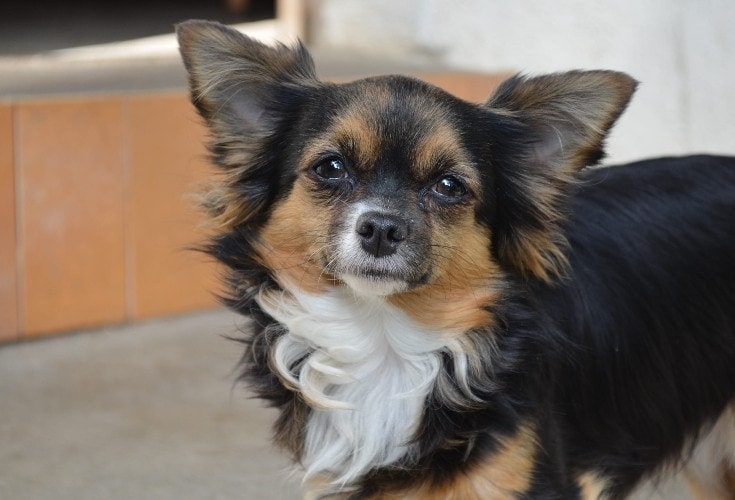
The Chihuahua has a large variety of color options, with one being a tri-color. The primary colors you will find are brown and black with tan markings. There will be color on the ears, around the eyes, and on the belly, legs, and the tip of the tail. The coat variety will determine grooming needs. Smooth-coated will need occasional brushing with regular baths, while the longhaired will need brushing at least weekly to prevent tangles.
10. Collie

With their smooth double coats, they have pretty tri-color markings. They have a black body with light brown markings on the legs and face, with white on the collar and front of the legs. A positive aspect of a Collie’s coat is that it won’t mat, but it is still a double coat and requires regular grooming. Shedding is minimal from day to day, but once a year, they will shed all at once.
11. Shetland Sheepdog

Also known as Shelties, they can be tri-colored with a black body and tan on their face and legs, with a white collar. Shelties have a thick double coat that is prone to profuse shedding. The outer coat is long and straight, with a short, furry undercoat. Brushing two to three times per week will help keep shedding at bay.
12. Boxer

With their sleek, short hair, the Boxer stands out with its tri-coloring. The body is light brown with a white belly, feet, and chest, with black on the muzzle and around the eyes. Grooming requirements are an occasional bath with a weekly rubdown using a hound glove to keep the coat clean and shiny.
13. Papillon
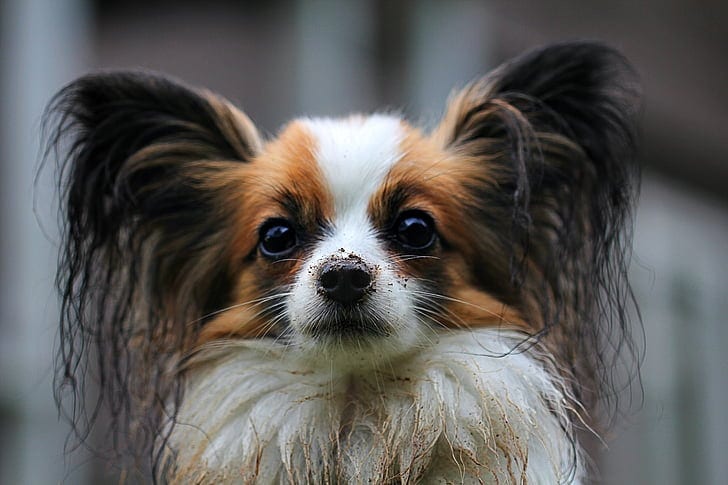
The little Papillon has distinct markings, with most of the body being white and then light brown and black on the head and the back toward the tail. Their coat is silky, and they have a plumed tail and long hair flowing from the ears. Papillons don’t have an undercoat, so grooming needs are less compared to other dogs with similar coats. They tend to mat on the legs and behind the ears, so weekly brushing will keep them looking neat.
14. Cavalier King Charles Spaniel
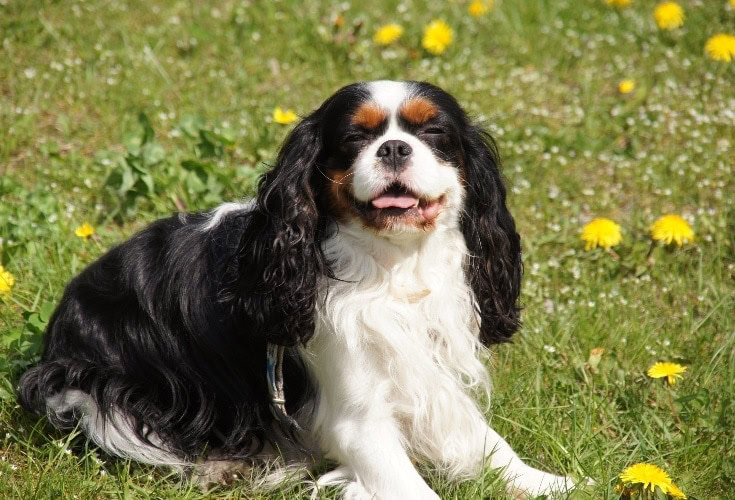
Tri-color Cavalier King Charles Spaniels are a mixture of white, tan, and white. The colors are rich in this long, silky coat. Fortunately, they don’t require tons of grooming to keep them looking nice. Regular brushing and an occasional bath will keep the occasional shedding from becoming a problem.
15. English Coonhound

The English Coonhound is unique because there is ticking within their tri-coloring. Ticking refers to color spotting across the body. Their colors will be black and white, with brown on the legs and head. The English Coonhound’s short coat requires minimal care but will benefit from regular grooming to keep shedding to a minimum. Using a grooming mitt on their body will distribute skin oils through the hair, allowing the coat to shine.
Conclusion
Coat colors bring personality to your dog since each one can display different markings and patterns. However, you shouldn’t choose a dog simply because of their coat color and markings because even though looks are ideal, the temperament of the dog is the most important factor. A multi-colored dog doesn’t say much at all about its personality. You can also recognize certain dog breeds due to their tri-color markings and know if they are purebred because of those components.
Feature Image Credit: Victoria Rak, Shutterstock

